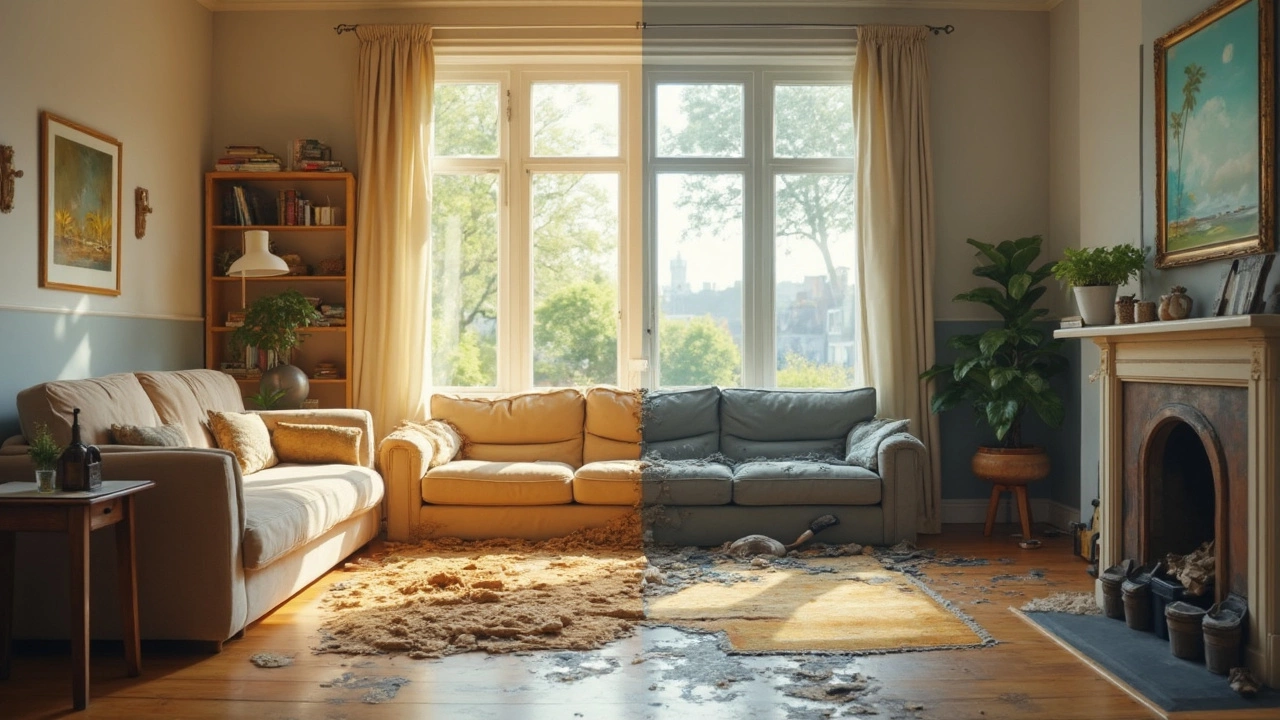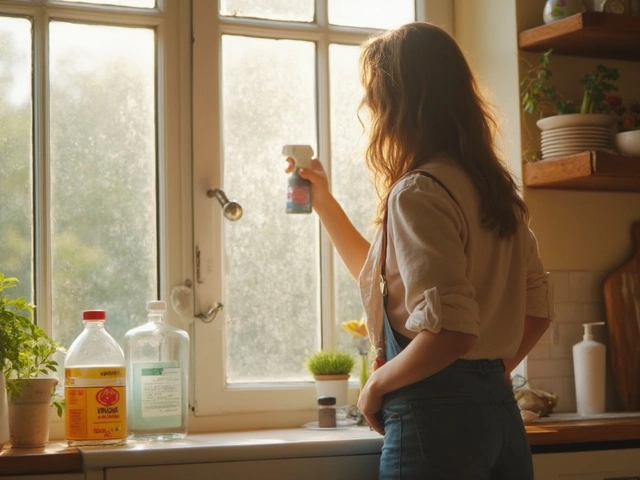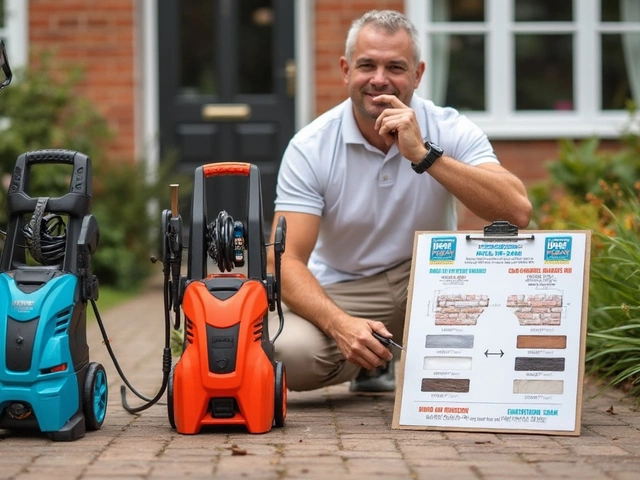You’ve seen it: those scuffed skirting boards, marks around light switches, faded carpet in the hallway. Is that just ‘wear and tear’ or something you’re on the hook to fix? The answer matters when deposit money is at stake.
Wear and tear happens because, well, life happens. Every time you open a door, walk on the carpet, or move a dining chair, tiny signs of use build up. Even if you’re super careful, you can’t keep a place looking brand new forever. That’s why landlords (and tenancy laws) expect some scuffs, fading, and gentle ageing, especially in high-traffic areas like kitchens and corridors.
But here’s the twist: it isn’t always obvious what’s expected. Something as simple as sunlight can slowly bleach your curtains or paint. Changing seasons make wood floors creak or shift, and that’s just nature doing its thing. Even vacuuming carpets eventually causes them to look a bit worn over the years.
- The Big Question: What is Wear and Tear?
- How Does Everyday Life Cause It?
- Wear and Tear versus Damage: Where’s the Line?
- Tips for Easier End of Tenancy Cleaning
The Big Question: What is Wear and Tear?
So what exactly does “wear and tear” mean when you’re renting a place? In a nutshell, it’s the natural damage or aging that happens to a property from regular, everyday use—stuff that’s basically impossible to avoid. No one expects your flat to look brand new after a year of living there. We’re talking about things like faded curtains, small carpet dents from furniture, or a few scuffs on the walls where bags brush against them.
Here’s something concrete: under UK law, landlords can’t deduct from your deposit for normal wear and tear. They can only charge for genuine damage: broken windows, missing fixtures, or gouges in the floor that weren’t there before. The key difference is whether the marks or wear happened because you lived there normally, or because of something careless.
The age of the property and how long you’ve lived there also matters. A five-year-old carpet shouldn’t look brand new. Even a high-end paint job loses its shine after a few tenancies. Experts in the rental business—even big agencies—agree that you can’t reasonably expect everything to stay in perfect shape no matter how careful tenants are.
Every inventory or check-in should list what’s already worn, and what’s spotless, at the start of your tenancy. If you’re not sure if something counts as just “worn” or genuinely “damaged,” snap photos before you move in and when you’re leaving. It makes sorting things out way easier later on.
How Does Everyday Life Cause It?
Everyday habits in a home aren’t just background noise—they’re actually the main reason for most wear and tear you see during end of tenancy cleaning. Start with the basics: foot traffic. Walking up and down the hallway in socks, shoes, or even slippers causes carpets and floors to get dull, fray, or lose their bounce, especially in busy areas like entrances and living rooms.
Furniture’s another big culprit. Moving a sofa even an inch for the perfect TV angle? That can leave dents in the carpet or scratch up hardwood. Dragging dining chairs in and out at every meal, plopping backpacks onto surfaces, tossing keys on a table—these little things wear down finishes and create scuff marks.
Bathrooms and kitchens get hit by daily routines. Water splashing around the sink, steam from a hot shower, or all that cooking moisture can lead to small stains, faded paint, or dingy grout. Handles and doorknobs can get polished smooth or even wobbly just from being gripped hundreds of times, while light switches and wall spots near them get fingerprint marks that build up with each flick.
Don’t forget sunlight. Curtains and blinds get faded patches if they’re in the path of direct sun, and wooden window sills can dry out and crack. You’ll also notice appliances getting less shiny—the fridge door isn’t quite the same after years of sticky fingerprints and quick wipes.
Even with regular cleaning, all these normal activities add up. You can slow it down a bit—use mats in high-traffic spots, lift furniture instead of dragging it, or wipe up spills as they happen—but you can’t really stop wear and tear. It’s just the result of a place being lived in, day after day.

Wear and Tear versus Damage: Where’s the Line?
This is where arguments start—what counts as normal wear and tear, and what’s actually damage? The difference matters, especially when it comes to your wear and tear deposit. Landlords have to accept everyday signs of use, but damage goes beyond that.
Think of it this way: normal wear and tear shows up slowly. Carpet that’s flattened in the hallway, paint faded by the sun, or hinges creaking after years of use all fit this category. No one expects a place to look brand new after a year (or five) of someone living there. Scuff marks from furniture or minor scratches on the floor—totally normal, and you shouldn’t be charged for them.
Damage is usually sudden and avoidable. We’re talking about things like a smashed window, cigarette burns in the carpet, deep gouges in wood floors, or red wine stains that nobody bothered cleaning up. Holes in the wall from hanging a TV mount or doors broken from being slammed—these are all landlord headaches and can mean a chunk out of your deposit if left that way.
- Wear and Tear: Worn carpets in high-traffic zones, faded curtains, loose door handles.
- Damage: Lost keys, big stains, broken appliances (from misuse), missing tiles, torn wallpaper.
A quick tip: Many agencies use detailed check-in and check-out inventory reports with photos. If you spot something listed as damage that you think is just wear and tear, point out the location and ask for proof. It’s easier to sort it out if you documented everything at move-in, with your own photos just in case.
So, when it comes to the end of tenancy cleaning, remember: worn looks happen over time, while damage looks like something went wrong. That’s the line you want to keep clear if you don’t want any headaches over your deposit.
Tips for Easier End of Tenancy Cleaning
Moving out and worried about getting your deposit back? You’re not alone. End of tenancy cleaning can be a pain, but there are ways to dial down the stress and avoid those annoying deductions. Most letting agents agree, cleaning issues are the number one reason tenants lose part of their deposit. But a smart plan—plus some elbow grease—can change the game.
Here’s what actually helps make things easier:
- Wear and tear is normal, but dirt is not. Focus on removing grime, limescale, and stains, not scrubbing away faded paint or slightly worn carpets.
- Always check your tenancy agreement and inventory for cleaning expectations—it usually lists what needs special attention like ovens, fridges, and bathrooms.
- If you have carpets, get them professionally cleaned—lots of landlords expect a receipt, especially if you’ve got pets.
- Don’t forget the small stuff: clean inside cupboards, wipe skirting boards, dust light fittings, and check behind furniture for hidden mess.
- For tough limescale in bathrooms, white vinegar works way better than any fancy cleaner—and costs next to nothing.
If you really want to make things simple, break it down with a checklist:
- Work room by room—finish one space before moving to the next.
- Start high (tops of cupboards, shelves) and work your way down.
- Take photos before you leave. It backs up your case if there’s a deposit dispute.
Surprisingly, according to a 2024 report by the Deposit Protection Service, over 60% of disputes were about cleaning, not damage. That’s a wild stat considering most of it is avoidable with the right routine. Here’s a quick look at which areas tend to get flagged the most:
| Area | Common Issues | % of Cleaning Disputes |
|---|---|---|
| Kitchens | Oven grime, sticky cupboards, food residue | 45% |
| Bathrooms | Limescale, dirty grout, hair | 30% |
| Floors/Carpets | Stains, pet smells, not vacuumed | 20% |
| Windows | Smudges, fingerprints, mold in sills | 5% |
Don’t leave cleaning until the last minute. If you tackle tricky spots over a week or two rather than panic-cleaning everything right before you hand over the keys, you’ll do a better job—and probably keep more of your cash.




